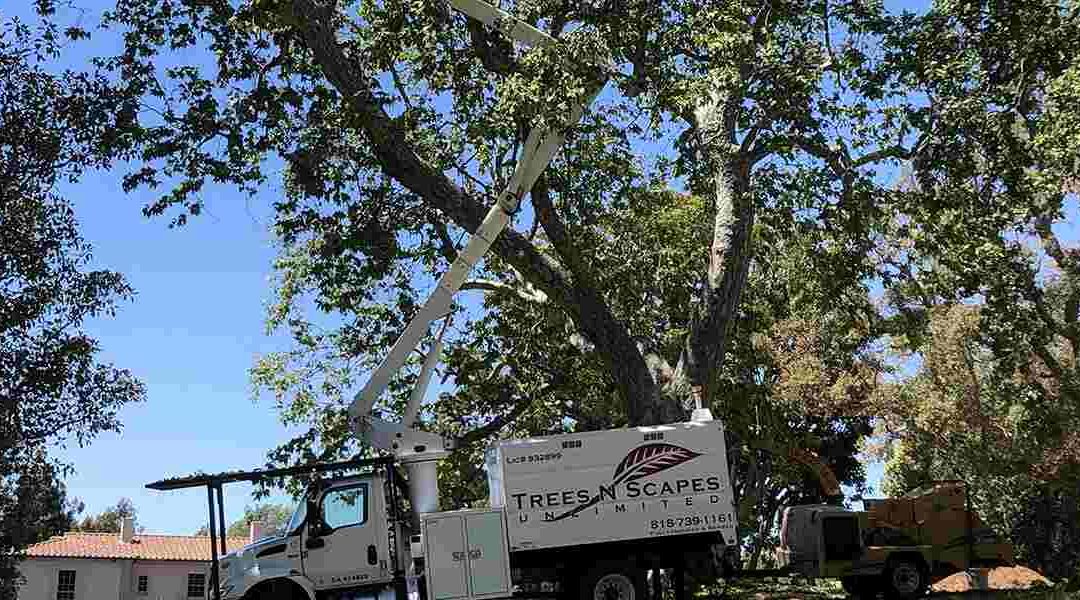Have you ever wondered what types of trees make up the canopy of an American forest? As Bentonville’s professional tree service, our arborists at Trees N Scapes Unlimited developed a brief guide. Trees are essential to the health of most ecosystems, especially in North America.
Thus, understanding the types of canopy trees help property owners and nature enthusiasts alike make better decisions about choosing trees for their properties.
A Forest’s Structure
First, take a look at the structure of a forest. It includes four levels, each with its role in the forest’s health. Below, you’ll discover how each level functions.
Forest Floor
The forest floor provides a catch-all for fallen branches, dead leaves, and other organic matter. This matter decays and nourishes the soil beneath the trees. You might also encounter animals and small plants on the forest floor.
The characteristics of plants found on the forest floor include low-growing foliage that requires little light. Certain grasses, vines, and immature trees sprout from the ground.
Understory
The understory contains older canopy saplings, smaller trees, and wild shrubs. Understory trees often have moss and fungi growing on their trunks and branches due to the lack of sunlight that reaches this level. The canopy saplings will fight to grow taller due to nutrient competition and limited sunlight.
The other vegetation typically stays close to the forest floor. It provides a food source for deer, rabbits, and the predators that eat the herbivores.
Canopy
The canopy consists of a wide variety of tall trees that grow in a symbiotic network. Most trees in this level are several decades old. Their broad leaves and outstretched branches limit sunlight and rainfall.
The rainfall that gets to the forest floor drips off the broad leaves. The limited precipitation prevents flooding and erosion.
Emergent Layer
The uppermost layer is the emergent layer. This part of the structure contains the oldest and tallest canopy trees. They stretch above the canopy. Trees native to the emergent layer are often centuries old.
Types of Canopy Trees
The types of canopy trees typically depend on the branch shapes characteristic to each species. The way their branches grow allows them to fit into forests like a puzzle. Most varieties of canopy trees grow to 15 or 45 feet tall.
The height variation allows them to occupy different levels of the forest structure, depending on their age and the forest’s age. The most common canopy shapes include:
- Weeping: Evergreen trees with limbs that spread outward and down. These trees have a delicate appearance with branch tips that seem to droop.
- Columnar: Evergreen trees with strong, short limbs that grow close and tight with the truck. Columnar tree branches begin close to the trunk’s base.
- Vase: Trees with branches that grow upward and out from the trunk. The branches continue spreading out with continued growth.
- Pyramidal: Evergreen trees that possess a classic Christmas tree shape.
- Spreading: Trees with thick, strong branches that grow out and away from the trunk. Smaller branches grow in a similar pattern to the base branches.
- Oval: Trees with branches of varying lengths that grow into a heart or oval shape naturally.
- Rounded: Trees with branches that grow out longer toward the tree’s base. The branches become shorter as they grow further up the tree for a circular appearance.
Let Trees N Scapes Unlimited Assist You in Choosing Trees
Are you interested in which types of canopy trees would flourish on your property? Our team at Trees N Scapes Unlimited can help you decide on backyard privacy trees of similar species. Call (479) 802-5766 to request an estimate.

